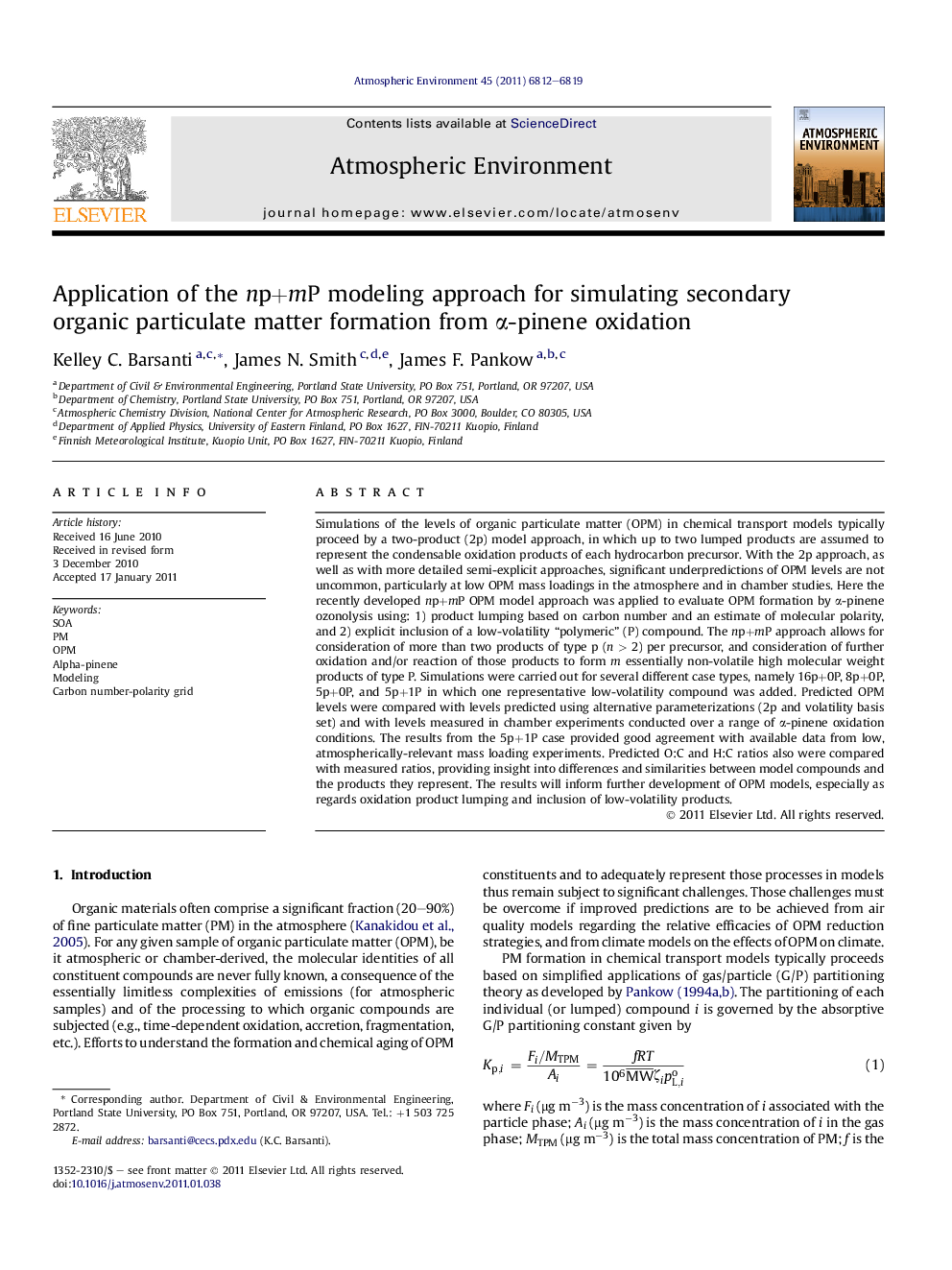| کد مقاله | کد نشریه | سال انتشار | مقاله انگلیسی | نسخه تمام متن |
|---|---|---|---|---|
| 4439220 | 1311012 | 2011 | 8 صفحه PDF | دانلود رایگان |

Simulations of the levels of organic particulate matter (OPM) in chemical transport models typically proceed by a two-product (2p) model approach, in which up to two lumped products are assumed to represent the condensable oxidation products of each hydrocarbon precursor. With the 2p approach, as well as with more detailed semi-explicit approaches, significant underpredictions of OPM levels are not uncommon, particularly at low OPM mass loadings in the atmosphere and in chamber studies. Here the recently developed np+mP OPM model approach was applied to evaluate OPM formation by α-pinene ozonolysis using: 1) product lumping based on carbon number and an estimate of molecular polarity, and 2) explicit inclusion of a low-volatility “polymeric” (P) compound. The np+mP approach allows for consideration of more than two products of type p (n > 2) per precursor, and consideration of further oxidation and/or reaction of those products to form m essentially non-volatile high molecular weight products of type P. Simulations were carried out for several different case types, namely 16p+0P, 8p+0P, 5p+0P, and 5p+1P in which one representative low-volatility compound was added. Predicted OPM levels were compared with levels predicted using alternative parameterizations (2p and volatility basis set) and with levels measured in chamber experiments conducted over a range of α-pinene oxidation conditions. The results from the 5p+1P case provided good agreement with available data from low, atmospherically-relevant mass loading experiments. Predicted O:C and H:C ratios also were compared with measured ratios, providing insight into differences and similarities between model compounds and the products they represent. The results will inform further development of OPM models, especially as regards oxidation product lumping and inclusion of low-volatility products.
► Carbon number-polarity grid serves as an oxidation product lumping tool.
► Explicit inclusion of low-volatility accretion product improves OPM model parameterization.
► The np+mP model approach guides development of OPM model parameterizations.
Journal: Atmospheric Environment - Volume 45, Issue 37, December 2011, Pages 6812–6819